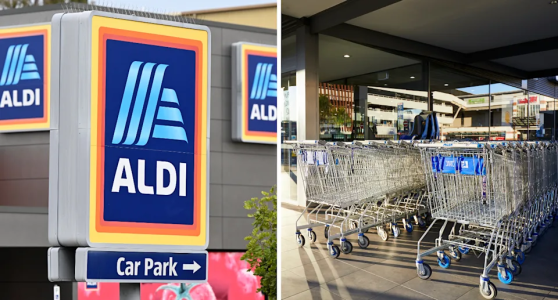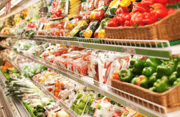ALDI says it 'won’t be beaten on the cost of your weekly shop'—here’s what that actually means
By
Maan
- Replies 0
German discount giant ALDI has quietly become a favourite among Australian shoppers, but few know the small details that give it an edge over Coles and Woolworths.
The supermarket has long been celebrated for its low prices, yet the strategies behind them are surprisingly simple.
From the moment customers enter, ALDI has designed its stores to keep costs down without compromising quality.
ALDI was recently crowned Australia’s best supermarket by shoppers in Canstar Blue’s annual Supermarket Satisfaction Ratings for the eighth consecutive year.
It consistently beat Coles and Woolworths in CHOICE’s government-funded shopping basket price comparisons.
ALDI Australia group director Simon Padovani-Ginies shared that the supermarket ‘won’t be beaten on the cost of your weekly shop’.
He said the store's lower prices were achieved through ‘fine-tuning even the smallest of details’.
ALDI revealed that savings start as soon as shoppers reach for a trolley.
‘To grab a trolley, you pop in a gold coin or one of our famous trolley tokens,’ an ALDI spokesperson said.
‘This simple system encourages shoppers to return their trolleys so fewer replacements are needed and the team spend less time collecting them.’
Unlike Woolworths and Coles, which review trolley locks on a case-by-case basis, ALDI applies this system across all stores.
Once inside, the store layout is another cost-saving measure. ‘Every store is designed around the same familiar layout – about half the size of other supermarkets.
That means lower overheads and a smoother shopping experience,’ the spokesperson said.
While Coles and Woolworths stock between 20,000 and 25,000 products, ALDI Australia offers just 1,800 items.
This streamlined approach reduces storage and handling costs while making shopping quicker for customers.
Clever touches like digital price tags, oversized barcodes to speed up checkout, and packing benches for self-bagging further enhance efficiency.
‘By sticking to this streamlined approach, ALDI can keep offering top-quality products at the lowest possible prices – delivering exceptional value to customers every day,’ the spokesperson added.
ALDI also employs fewer staff than its larger competitors and does not operate in Tasmania or the Northern Territory, nor does it offer online shopping.
The absence of in-store music reportedly saves around $230 to $1,600 per year per supermarket, according to APRA AMCOS estimates.
Rising grocery costs have prompted Australians to shop more strategically.
Canstar Blue research found households of four now spend an average of $240 per week on groceries, up 11 per cent from the previous year.
Many shoppers visit two or more stores to complete their shop, with over 80 per cent changing habits by checking unit prices, buying marked-down products, choosing in-season produce, or opting for frozen alternatives.
CHOICE’s latest price comparison showed a 25 per cent difference between ALDI and IGA for a 14-item basket, with smaller gaps of six and seven per cent between ALDI and Woolworths and Coles respectively.
Despite Coles and Woolworths controlling around 67 per cent of the Australian grocery market, ALDI’s 9 per cent share proves its model resonates with price-conscious shoppers.
If you’re looking for a real-life example of how switching stores can make a big difference to your weekly budget, there’s a story that perfectly illustrates this.
It follows one shopper who made a simple change and saw her grocery savings jump significantly—along with a surprising emotional benefit.
This story might give you some practical ideas for your own shopping routine.
Read more: This woman traded Woolworths for ALDI and saves $70 a week! Find out her emotional budget secret!

With grocery costs rising, could ALDI’s model become the blueprint for how Australians shop in the future?
The supermarket has long been celebrated for its low prices, yet the strategies behind them are surprisingly simple.
From the moment customers enter, ALDI has designed its stores to keep costs down without compromising quality.
ALDI was recently crowned Australia’s best supermarket by shoppers in Canstar Blue’s annual Supermarket Satisfaction Ratings for the eighth consecutive year.
It consistently beat Coles and Woolworths in CHOICE’s government-funded shopping basket price comparisons.
ALDI Australia group director Simon Padovani-Ginies shared that the supermarket ‘won’t be beaten on the cost of your weekly shop’.
He said the store's lower prices were achieved through ‘fine-tuning even the smallest of details’.
ALDI revealed that savings start as soon as shoppers reach for a trolley.
‘To grab a trolley, you pop in a gold coin or one of our famous trolley tokens,’ an ALDI spokesperson said.
‘This simple system encourages shoppers to return their trolleys so fewer replacements are needed and the team spend less time collecting them.’
Unlike Woolworths and Coles, which review trolley locks on a case-by-case basis, ALDI applies this system across all stores.
Once inside, the store layout is another cost-saving measure. ‘Every store is designed around the same familiar layout – about half the size of other supermarkets.
That means lower overheads and a smoother shopping experience,’ the spokesperson said.
While Coles and Woolworths stock between 20,000 and 25,000 products, ALDI Australia offers just 1,800 items.
This streamlined approach reduces storage and handling costs while making shopping quicker for customers.
Clever touches like digital price tags, oversized barcodes to speed up checkout, and packing benches for self-bagging further enhance efficiency.
‘By sticking to this streamlined approach, ALDI can keep offering top-quality products at the lowest possible prices – delivering exceptional value to customers every day,’ the spokesperson added.
ALDI also employs fewer staff than its larger competitors and does not operate in Tasmania or the Northern Territory, nor does it offer online shopping.
The absence of in-store music reportedly saves around $230 to $1,600 per year per supermarket, according to APRA AMCOS estimates.
Rising grocery costs have prompted Australians to shop more strategically.
Canstar Blue research found households of four now spend an average of $240 per week on groceries, up 11 per cent from the previous year.
Many shoppers visit two or more stores to complete their shop, with over 80 per cent changing habits by checking unit prices, buying marked-down products, choosing in-season produce, or opting for frozen alternatives.
CHOICE’s latest price comparison showed a 25 per cent difference between ALDI and IGA for a 14-item basket, with smaller gaps of six and seven per cent between ALDI and Woolworths and Coles respectively.
Despite Coles and Woolworths controlling around 67 per cent of the Australian grocery market, ALDI’s 9 per cent share proves its model resonates with price-conscious shoppers.
If you’re looking for a real-life example of how switching stores can make a big difference to your weekly budget, there’s a story that perfectly illustrates this.
It follows one shopper who made a simple change and saw her grocery savings jump significantly—along with a surprising emotional benefit.
This story might give you some practical ideas for your own shopping routine.
Read more: This woman traded Woolworths for ALDI and saves $70 a week! Find out her emotional budget secret!
Key Takeaways
- ALDI’s cost-saving strategies start with trolley tokens to reduce replacements and staff time.
- Smaller store size and limited product range lower overheads and streamline shopping.
- Efficiency measures include digital price tags, oversized barcodes, and packing benches for self-bagging.
- ALDI’s low prices remain a strong draw despite limited geographic coverage and no online shopping.
With grocery costs rising, could ALDI’s model become the blueprint for how Australians shop in the future?








